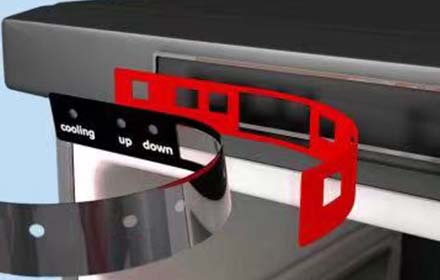
PE protective film is widely used. Therefore, the most important question becomes how to choose the right PE protective film. Today, our industrial adhesive tape supplier has compiled five tips for choosing PE protective film online to share with you. As follows:
This is difficult to identify with the naked eye. It is best to use optical instruments to determine it. There is also a simpler method, which is to cut a small piece of PE protective film and place it on the middle of the desktop one by one, and then create a blank WORD document on the computer to check the brightness (professional term is lightness) of the areas with or without the protective film and different protective film areas. The material with the highest brightness can be selected, which means that its transparency is the best protective film.
How to check the haze value of PE protective film? First, turn off the display and follow the same method as above. After opening each protective film, the clearer the color of the computer display screen, the smaller the haze value of the material, indicating that the material is better. This method is easier to distinguish by using a black test board.
In a slightly dark room, turn on a fluorescent lamp and tear off the upper and lower protective film layers of the pe protection film. Hold it by hand between the eyes and the lamp, and carefully observe whether there is a layer of fog-like substance evenly distributed inside the PE protection film. The more serious the fog-like substance, the greater the haze value, and the worse the material, and vice versa.
Due to the sensitivity of the LCD monitor, it is afraid of static electricity. The smaller the static electricity generated during the process of pasting the protective film, the better. The test method is to prepare the PE protective film (3 layers or 2 layers) to be tested. Tap some cigarette ash on the desktop, or sprinkle some small paper scraps on the desktop. Then, tear off the top protective film layer of the PE protective film (there is such a step for 3-layer material), and then tear off the protective film of the silicone layer, and when tearing off this layer of PE protective film, immediately use the used layer (silicon surface) to approach the cigarette ash or paper scraps to see whether the protective film will adsorb these things to the silicone layer of the protective film and the degree of adsorption. The stronger the adsorption, the higher the static electricity generated by the material and the worse the material, and vice versa.
Whether the PE protective film is scratch-resistant or not is currently the most concerned issue for everyone. The scratch-resistant materials on the market are basically the same (2-3H) and the performance is good. There are only scratches and no scratches. The test method is to use a pencil with a hardness of 3H, press and push it on the PE protection film with a force of 500G at an angle of 45 degrees for 10 times. There is no scratch, which means that the hardness requirement of 3H can be met.
There is also a simple method, which is to use a slightly hard metal device or freshly cut nails to scrape the protective pe tape film at the strength of the usual handwriting, and if it is very easy to scratch, it is determined that it is not scratch-resistant. If there is no scratch, it can be determined that it has a scratch-resistant function.
In recent years, the screens of many products have become larger and larger, and more and more smart devices with capacitive screens (touched by finger instead of using a pen on the old-type resistive screens) have been used. Therefore, PE protective film needs to have an anti-fingerprint function.